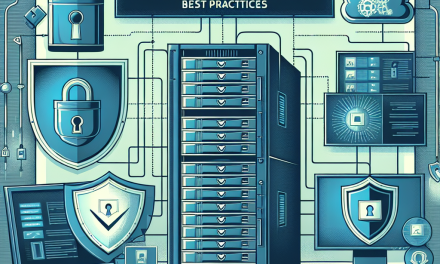Published on WafaTech Blogs
In today’s interconnected world, APIs serve as the backbone for application communication, providing critical functionality across diverse platforms. For organizations leveraging Windows Server as an API gateway, security is paramount. This article delves into best practices and strategies for securing your Windows Server API Gateway effectively.
Understanding the API Gateway
An API gateway acts as a single entry point for managing requests to backend services. It handles client requests, routes them to the appropriate services, and returns responses. However, it also becomes a prime target for attacks if not appropriately secured.
Key Security Risks Associated with API Gateways
- Unauthorized Access: Unauthenticated users can exploit APIs to access sensitive data.
- Data Breaches: Insufficient encryption may lead to data leaks during transmission.
- DDoS Attacks: Overwhelming the API with traffic can disrupt service availability.
- Injection Attacks: Attackers might exploit vulnerabilities to inject malicious code.
Best Practices for Securing Your Windows Server API Gateway
1. Implement Robust Authentication Mechanisms
Use OAuth 2.0 and OpenID Connect. These standards provide secure token-based authentication, allowing users to authenticate without exposing credentials.
Multi-Factor Authentication (MFA) is also essential. Ensuring that users provide a second form of verification strengthens access control.
2. Enforce Strict Authorization Policies
Role-Based Access Control (RBAC) is foundational. Implement granular permissions based on user roles to restrict access to sensitive endpoints.
API Keys should also be used to authenticate clients. Ensure that API keys are rotated periodically and are not hard-coded in application code.
3. Secure Data Transmission
Use HTTPS for all communications. Transport Layer Security (TLS) encrypts data during transmission, preventing eavesdropping.
Implement HSTS (HTTP Strict Transport Security) to mandate secure connections. It protects against potential downgrade attacks.
4. Rate Limiting and Throttling
Prevent abuse by implementing rate limiting on API endpoints. This mitigates the risk of DDoS attacks by limiting the number of requests a client can make in a defined timeframe.
Apply throttling policies to slow down requests when certain limits are reached, ensuring your API can withstand unexpected surges in traffic.
5. Input Validation and Sanitization
Sanitize and validate inputs rigorously. This practice can help safeguard against SQL injection and similar attacks.
Utilize libraries or frameworks with built-in protections against injection vulnerabilities. Always assume that input is hostile.
6. Logging and Monitoring
Continuous monitoring of API traffic is vital. Implement logging strategies that capture request and response data to identify potential threats.
Use tools like Microsoft Azure Monitor or Windows Event Forwarding (WEF) to track API usage and detect anomalies.
7. Regular Security Assessments and Updates
Conduct periodic vulnerability assessments and penetration testing to uncover weaknesses in your API gateway.
Keep your Windows Server updated. Regularly apply patches and updates to resolve known vulnerabilities.
8. Implement API Gateway Security Features
Utilize built-in security features in your API gateway software. Features like IP whitelisting, JSON Web Token (JWT) verification, and threat intelligence can significantly enhance security.
9. Create a Security Incident Response Plan
Prepare for potential security incidents with a well-defined response plan. Define roles, responsibilities, and communication protocols to address security breaches effectively.
10. Educate Your Team
Security is everyone’s responsibility. Provide regular training for developers and administrators on secure coding practices and current security threats.
Conclusion
Securing your Windows Server API gateway is a multifaceted challenge that requires a comprehensive approach. By implementing the best practices outlined in this article, organizations can mitigate risks and protect sensitive data from potential threats. Remember, security is not a one-time task but a continuous process that evolves with the threat landscape.
For further discussions, insights, or guidance, feel free to engage with us in the comments below!
Stay secure, stay informed with WafaTech!





